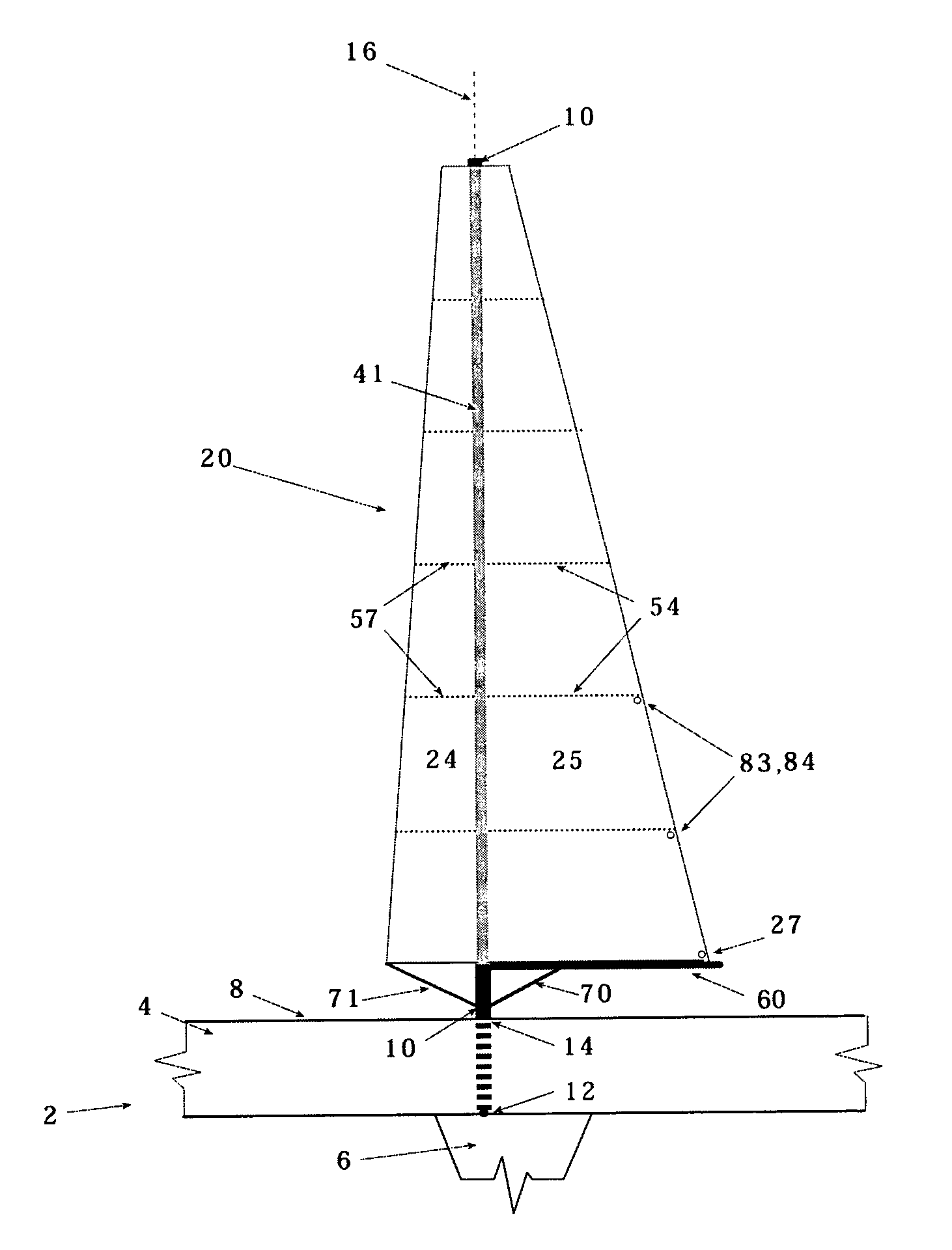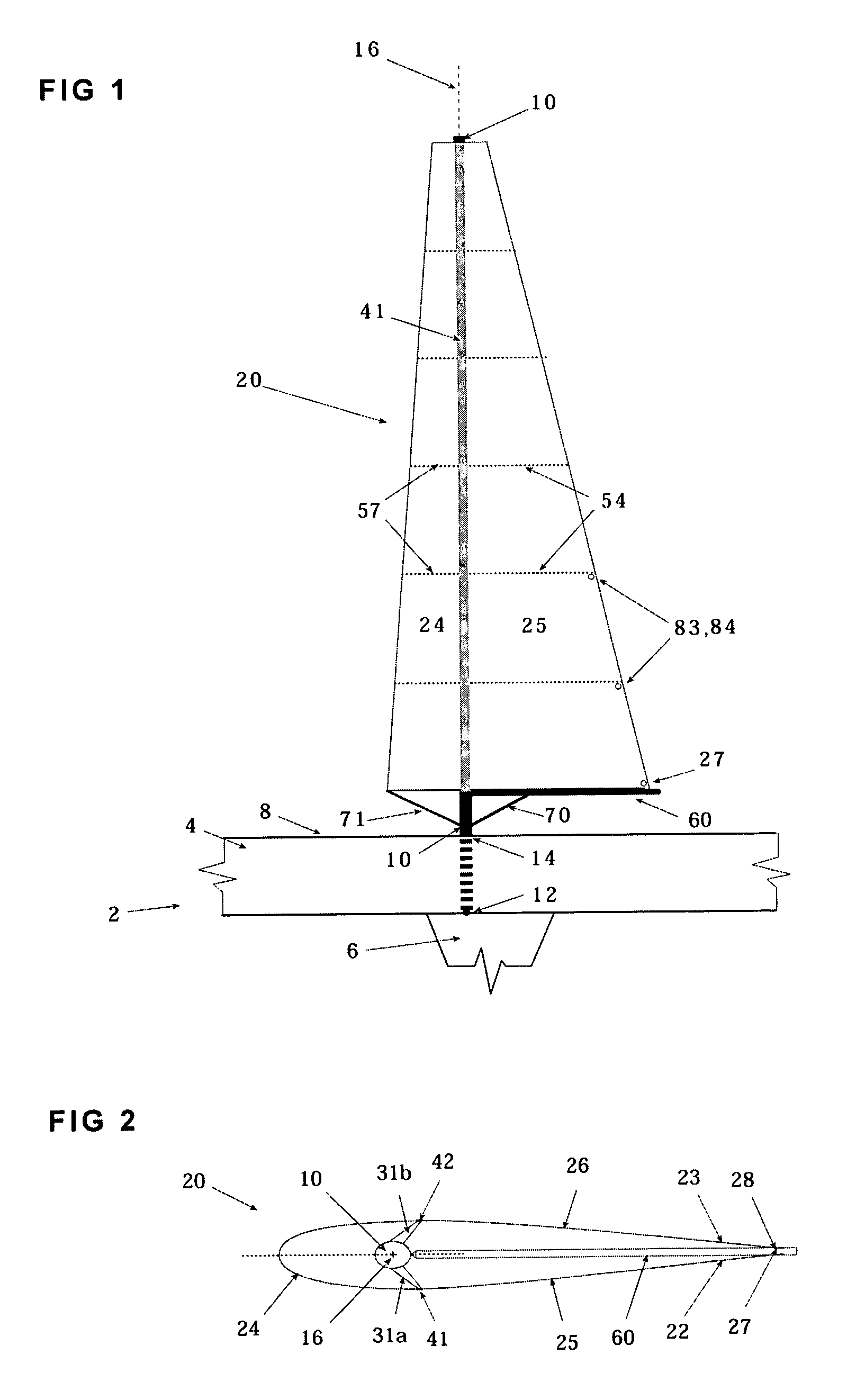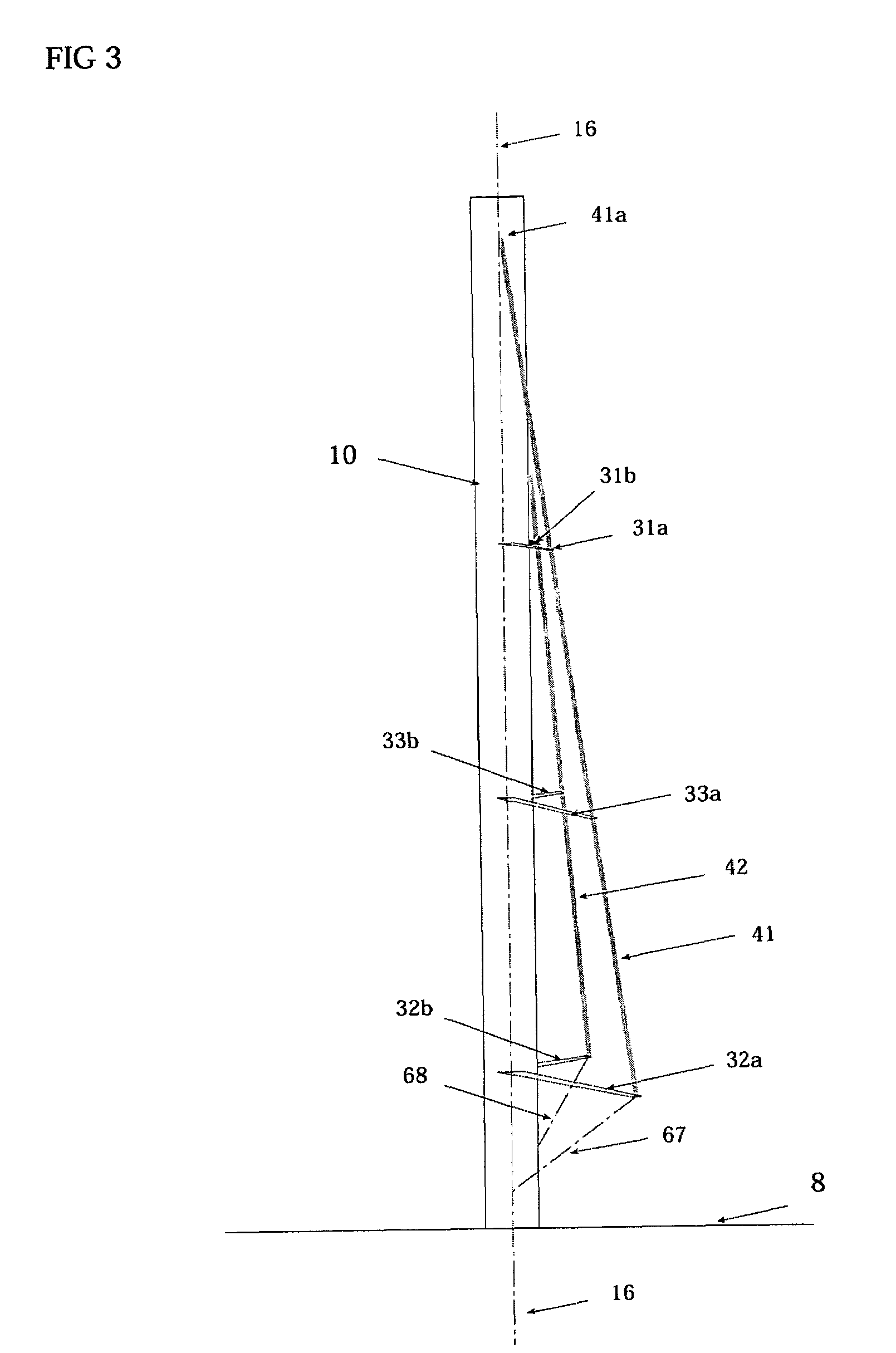Light-weight, soft wing-sail for wind-propelled vehicle
a technology of soft wings and wind-propelled vehicles, which is applied in the direction of propulsive elements, floating buildings, vessel construction, etc., and can solve the problems of less safe at sea, negative effects on boat stability and performance,
- Summary
- Abstract
- Description
- Claims
- Application Information
AI Technical Summary
Benefits of technology
Problems solved by technology
Method used
Image
Examples
Embodiment Construction
[0027]With reference to FIG. 1, there is illustrated a wind-propelled water vehicle, generally designated 2, including a hull 4, a keel 6, and a deck 8. Also illustrated in FIG. 1 is a free-standing and rotatable mast, generally designated 10, vertically mounted for rotation by means of a ball 12 at the level of keel 6, and a roller bearing 14 at the level of the deck 8, such as to permit rotation of the mast about its vertical axis 16.
[0028]Vertical mast 10 carries a light-weight, soft wing-sail, generally designated 20, for propelling the vehicle. As shown particularly in FIG. 2, wing-sail 20 is supported on mast 10 such as to assume a selected airfoil shape having a leading edge defined by a U-shaped panel 24 fore of the mast, and a trailing edge aft of the mast defined by two spaced side panels 25, 26. As shown particularly in FIGS. 1, 2 and 6, the lower aft side of the trailing edge side panels 25, 26 includes clews 27, 28.
[0029]The selected airfoil shape of the wing-sail 20 is...
PUM
 Login to View More
Login to View More Abstract
Description
Claims
Application Information
 Login to View More
Login to View More - R&D
- Intellectual Property
- Life Sciences
- Materials
- Tech Scout
- Unparalleled Data Quality
- Higher Quality Content
- 60% Fewer Hallucinations
Browse by: Latest US Patents, China's latest patents, Technical Efficacy Thesaurus, Application Domain, Technology Topic, Popular Technical Reports.
© 2025 PatSnap. All rights reserved.Legal|Privacy policy|Modern Slavery Act Transparency Statement|Sitemap|About US| Contact US: help@patsnap.com



